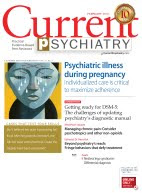Wednesday, July 1, 2009
Assessing potential for harm:
Would your patient injure himself or others?
Charles Scott, MD
Professor of clinical psychiatry, Chief, division of psychiatry and the law, Department of psychiatry and behavioral sciences, University of California, Davis School of Medicine, Sacramento, CA
Phillip J. Resnick, MD
Professor of psychiatry, Director, division of forensic psychiatry, Case Western Reserve University, Cleveland, OH
Police take Ms. L, age 23, to the emergency room (ER) after her fiancé called them. He told the police that after a “night of drinking” they argued about a girl he had flirted with. Ms. L took out a loaded gun and threatened to shoot herself. She eventually handed the gun over to the police.
In the ER, Ms. L’s blood alcohol level is 0.20%. She tells the admitting emergency room nurse, “I would never hurt myself. I drank too much and was acting stupid. I just want to go home and sleep it off. I promise not to harm myself.” Emergency room staff observe Ms. L smile and giggle while waiting for a psychiatric evaluation.
What would you do? Hospitalize Ms. L for safety, or accept her promise not to hurt herself and send her home? What criteria would you use?
Knowing how to assess patients such as Ms. L is an essential psychiatric skill, whether or not you trained in forensic psychiatry. This article includes case reports that illustrate techniques for evaluating patients who may harbor suicidal or homicidal thoughts.
Read full text (free access)
Comment on this article
Email the editor
Subscribe to:
Post Comments (Atom)


No comments:
Post a Comment